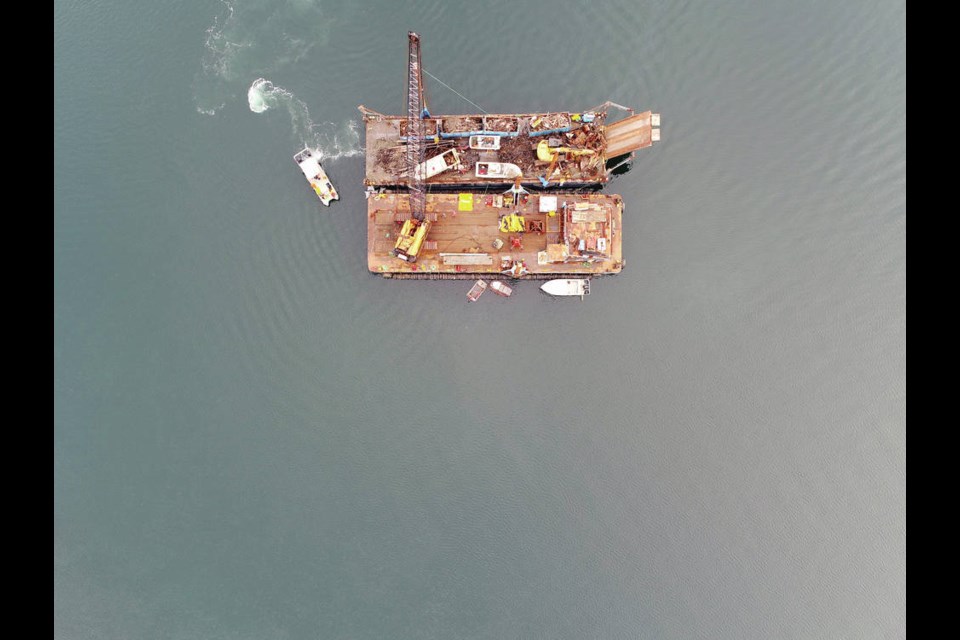The Songhees First Nation is spearheading a drive to take more derelict boats out of the water while providing jobs and training for other nations on the South Island.
About 100 abandoned and sunken vessels are expected to be removed over the next nine months through the Salish Sea Marine Stewardship Project.
The province has provided $2 million through its Clean Coast, Clean Water Initiative to fund the project, led by the Songhees Development Corporation, Salish Sea Industrial Services and the Dead Boats Disposal Society.
Salish Sea Industrial Services is a marine construction business jointly owned by the Songhees and Esquimalt Nations in partnership with the Ralmax Group.
It operates a 145-foot barge and 150-tonne crawler crane that lifts boats out of the water and hauls them to home base at Point Hope Maritime on the Upper Harbour, where they are broken down in a containment area. Stainless steel pieces, batteries, hull windows, engines, wood, plastics and hydrocarbons are recycled, and the rest — the bulk of it fibreglass — is hauled to the landfill.
The Dead Boats Disposal Society, headed by John Roe, another partner in the stewardship plan, has helped Salish Sea Industrial Services and its barge crews, divers and sub-contractors to identify and remove more than 145 dead boats over the past three years from the Greater Victoria area and Gulf Islands.
Christina Clarke, corporate executive officer of the Songhees Development Corp., said the project will include South Island First Nations in whose territories it operates, and will offer jobs and training opportunities as well as hiring local mariners to support the identification and removal of derelict vessels.
“We are bringing forward proven partnerships and expertise, and inviting fellow nations to join us and build trust around common goals,” said Clarke. “Working together on sharing job and training opportunities, we will contribute to advancing a skilled Indigenous workforce ready to compete and prosper in the rapidly growing marine economy.”
Beecher Bay First Nation is the first to sign on.
Chief Russell Chipps supports the project, saying it aligns with his community’s “social and economic goals for marine industry and marine conservation.”
He is also keen to utilize eight divers from several First Nations on the South Island who have recently been certified for ocean monitoring at the new spill response centre at Beecher Bay marina, which will open this summer. Members ofthe Songhees, Esquimalt, Malahat, Sooke and Beecher Bay nationas all took part in the diver training.
“We want to be the ambulance for the sea here,” Chipps said in an interview. “We’re caring for the ocean here. You can’t just sit around. Some of us have to do the work, and we want to be the warriors who do the work.”
“We look forward to working with the Songhees on this project to develop specialized skills that will strengthen our Nation’s marine economy while advancing our conservation efforts on our shores and in our waters,” said Chipps.
In February, the federal government provided a fresh round of financing through its Ocean Protection Plan to remove 24 abandoned, beached and sunken vessels, including 10 at Cadboro Bay and others around Gabriola, Saltspring and Pender islands.
Almost all of the vessels removed have been pleasure craft.



